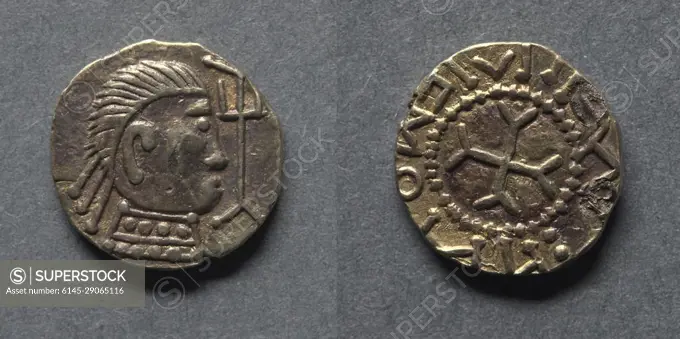Witmen Tremissis: Bust and Trident (obverse); Cross Fourchée (reverse), early 600s. England, Anglo-Saxon, early 7th century. Gold; diameter: 1.1 cm (7/16 in.). The Crondall Hoard is a hoard of coins that was found in 1828 in the village of Crondall in the English county of Hampshire. It is believed to date to the seventh century and was studied by Dr. Carol Humphrey Vivian Sutherland (1908-1986), an English numismatist. He characterized this coin as being a close copy of the Witmen prototype, the most common type found in the hoard. Witmen, or his design, featuring a bust on one side and a cross on the other, seems to have been very popular and remained popular for many years. During this time however the portraits grew cruder and cruder, the legends became even more blundered, and the gold content fell lower and lower.
SuperStock offers millions of photos, videos, and stock assets to creatives around the world. This image of Ancient Merovingian Coins: Explore Historical Currency from the Early Medieval Period by Piemags/PL Photography Limited is available for licensing today.
DETAILS
Image Number: 6145-29065116Royalty FreeCredit Line:Piemags/PL Photography Limited/SuperStockCollection:PL Photography Limited Contributor:Piemags Model Release:NoProperty Release:NoResolution:3400×1695
